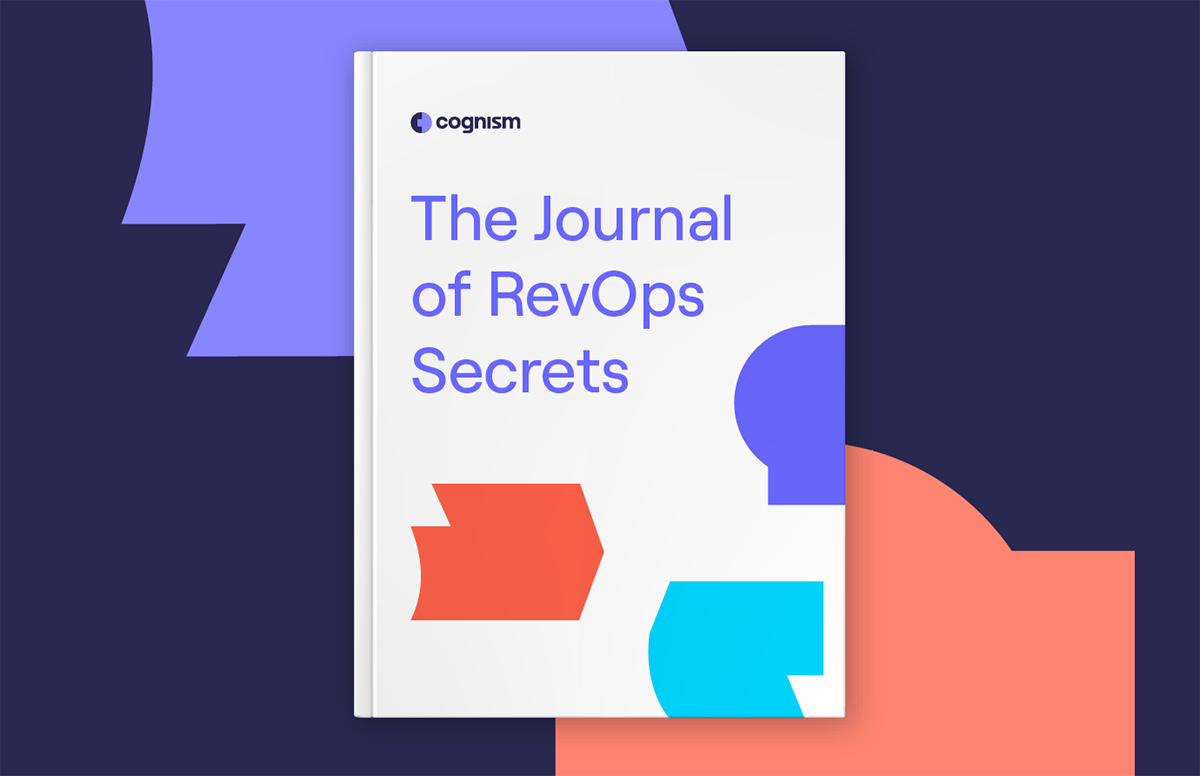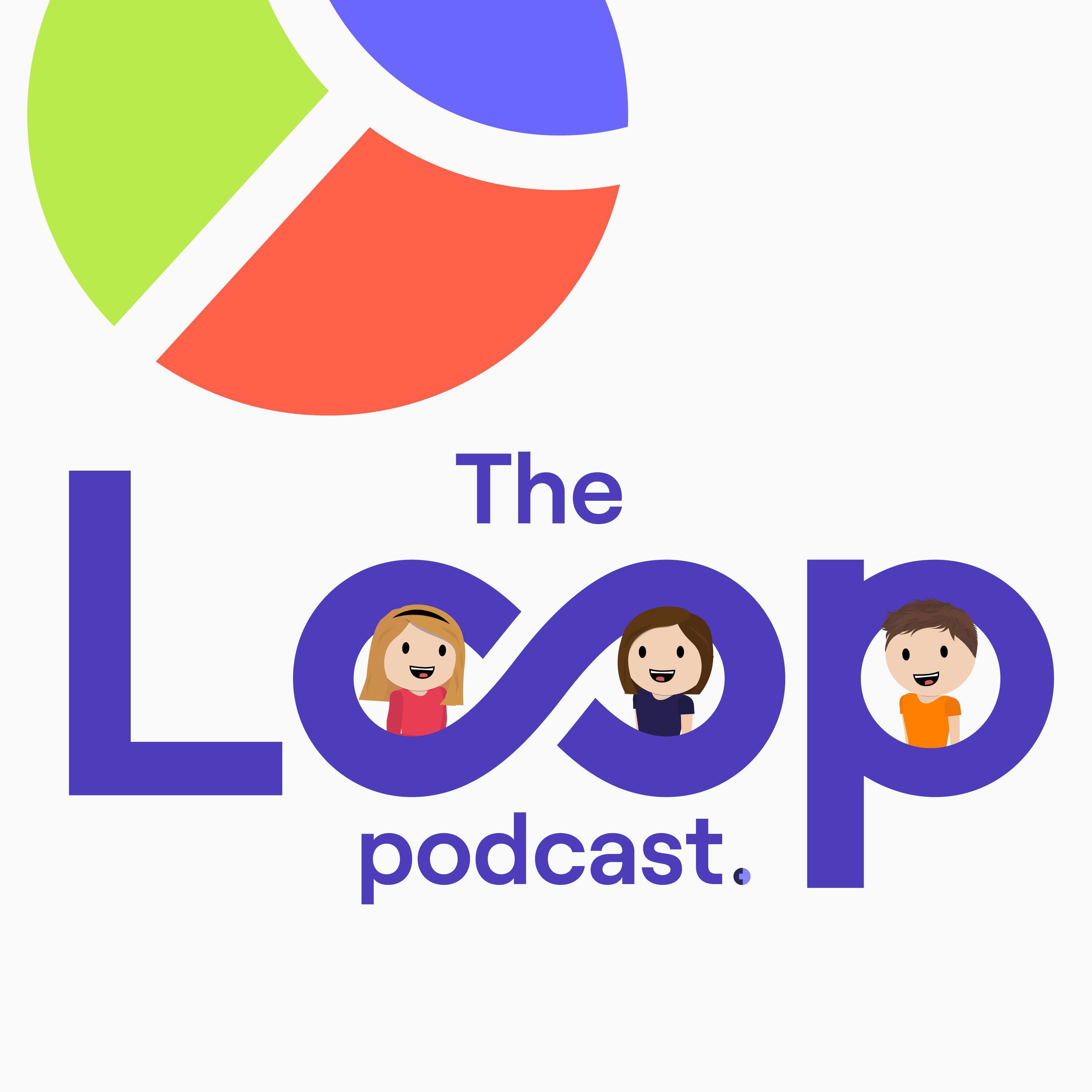Chapter 5: Preventing churn and increasing expansions
In this chapter, we’ll cover how the customer marketing team at Cognism works with operations, customer success and account managers (AMs) to identify accounts at risk or that are likely to renew.
We’ll look at how they use these insights and data to improve multi-threading and create targeted and personalised nurture campaigns, which ultimately help reduce churn and increase expansions.
%20(5).png)
While a lot of marketing activity will focus on generating net new customers, marketing to your current customer base is just as important.
In fact, it costs five times more to acquire a new customer than it does to retain an existing one. This only gets better if that customer expands too.
Customer marketing is designed to support the customer success function, drive retention, prevent churn and increase expansions.
This could include sharing onboarding materials, case studies, customer events or creating personalised nurture campaigns.
Understanding customer needs and use cases allows customer marketing to tailor recommendations and encourage upsells and cross-sells. This ensures you maximise the revenue generated from each customer.
It can also help ensure your customers are happy and get as much value from your products as possible.
Customers unhappy with your product will likely cancel their contracts or switch to alternative providers.
Customer marketing helps reduce churn rates by addressing customer issues and improving adoption.
1) Tracking customer health data
When it comes to customer health, customer behaviour metrics help measure your customers’ satisfaction.
This helps indicate exactly where a customer falls on your customer retention scale.
These metrics allow you to identify any behaviours or patterns across your customer base which might lead to churn, meaning you can proactively identify unhappy customers before it’s too late.
Comparatively, you can also identify your happiest customers.
This helps your customer success managers and customer marketing team understand which accounts to prioritise and target to increase expansions.
1. a) Account scoring
An account score is a good way to identify which accounts present an opportunity for up-sells and cross-sells.Here, Ben Dyson, Sales Operations Manager at Cognism, looks at each account and scores them based on the firmographic makeup of the company using Cognism’s data:
- Their sales headcount
- The number of SDRs
- If they have a CRM
- If they have a RevOps team
- If they have a sales and marketing automation tool
Each variable is judged as follows:
| Best | Good | Medium | Bad | |
| Sales Headcount | >50 | >20 | <20 | <5 |
| SDR Headcount | >50 | >20 | <20 | <5 |
| RevOps Headcount | >1 | 1 | 1 | 0 |
| CRM | Yes | Yes | No | No |
| Sales Automation Tool | Yes | Yes | No | No |
| Marketing Automation Tool | Yes | Yes | No | No |
The higher the account score, the more likely the account is to retain or expand.
The operations team at Cognism tracks and relays this to account managers and customer marketing.
1. b) Prioritisation score
At Cognism, the operations team also created a prioritisation score.
This identifies which accounts are utilising all of their licences and have the capacity to buy additional ones, e.g. they have fewer licences than the number of SDRs.
This could be because they have increased their sales headcount or if they are on track to use 100% of their credits by the end of their contract, indicating there is room for expansion. As Ben explained:
“We track credit usage. We look at an account’s annual credit allowance and compare the number of credits they’ve used versus the tenure in their contract.”
“If they’ve used more credits than expected at a certain point in their contract, we flag this as a green account. On the other end of the spectrum, if an account does not use the credits they bought, it is potentially at risk and marked as a red account.”
1. c) The avid model
Cognism also uses a framework called the avid model. This looks at 4 key areas:- Have all an account’s licences that have been assigned been activated, and are they up and running?
- Has the account seen that they can get the data they want?
- How has Cognism integrated into their business structure, and are they using Cognism alongside other products?
- Is the account seeing the value they wanted to see with Cognism?
As Ben explained:
“We have various base points around this model. We track the time between them becoming customers and their time-to-value.”
“If we see that an account has several unassigned licences, regardless of the stage of their journey, they go through a play in ChurnZero, a customer success platform, to get those licences assigned.”
.png?width=590&height=590&name=Fix%20your%20funnel%20blog%20graphics-08%20(1).png)
1.d) Customer satisfaction surveys
You might also send out customer satisfaction (CSAT) surveys to understand your customers' health. This helps identify negative themes in the customer experience and key customer trends whilst tracking the customer lifecycle.At Cognism, the customer marketing team sends 4 key CSAT surveys in ChurnZero, a customer success platform, at different customer journey stages. These include the following:
- Post 1-month contract start date CSAT
- Post-on-boarding journey implementation/ User-training CSAT
- Single Licence: Post onboarding journey implementation CSAT
- Post 1-month contract start date CSAT - Active user
1. e) Net Promoter Score
A net promoter score is a measure used to gauge a customer’s satisfaction and health by asking them how likely they are to recommend your product or services to a friend or colleague.
This is a standard customer experience metric that helps identify at-risk customers and the loyalty of your customer base.
At Cognism, these surveys are sent out quarterly.
By collating this data and splitting it into different segments, such as region or package type, you can understand your happiest and healthiest accounts.
This data gets relayed to customer marketing, who can then analyse and understand which accounts to prioritise when preventing churn and increasing expansion.
2) Multi-threading to increase expansions
The customer marketing team at Cognism regularly support AMs with different multi-threading activities within their existing accounts to help expand them.
2. a) Identifying contacts for expansion
Using the data provided by the operations team, the AMs and customer marketing team can identify which accounts are suitable for cross-selling.
Generally, the AM understands the strategy for each account. They are aware, for example, if the organisation could use Cognism in different regions or across different personas.
Karin O’Grady, Global Head of Customer Marketing at Cognism, mapped out the different types of cross-functional plays useful for multi-threading in Outreach.
She created several outreach sequences that AMs could use to expand their accounts strategically. As Karin explained:
“An account’s sales team might use Cognism and there is an opportunity to expand into marketing, or vice versa. Alternatively, an account might use Cognism in the UK and there’s an opportunity to expand into the US. I created a number of outreach sequences relevant to either the geography or the persona the AMs were trying to expand into.”
The AMs would then find any net-new contacts that weren’t already in their databases and were either in the region or persona they were trying to expand into and feed them these sequences to multithread within their customer account.
This would foster an opportunity that could, ultimately, lead to an expansion.
.png?width=1376&height=356&name=Fix%20your%20funnel%20blog%20graphics-09%20(1).png)
2. b) Improving personalisation
Hyper-personalising your outreach can improve multi-threading activities and conversion rates.
At Cognism, AMs often customise these email sequences in Outreach to suit the contact's account, persona, or region.
For example, an AM might highlight specific case studies and showcase how current users within that organisation use Cognism to achieve positive results. That way, the contacts being multithreaded can understand how their colleagues are benefiting from the tool in different regions.
Alternatively, if a sales team in a particular account uses Cognism to improve their prospecting, an AM might highlight the different marketing use cases, such as running email campaigns or building account-based marketing strategies.
Here, you can layer in different content and assets including case studies or videos. As Karin shared:
“We bolded certain parts and aspects of these emails that the AM could customise and add in any significant results or context.”
“We also A/B tested certain subject lines and iterated accordingly. The better-performing subject lines directly reference their colleagues using our tool, how to maximise existing tech and any tips or recommendations we had for them. This all allowed us to improve personalisation at a scale.”
The impact of this was clear, as the data operations team at Cognism found a strong correlation between how many contacts were engaged on a specific opportunity and the win rate and average order value.
2. c) Competitor analysis
One way Ben helped support the customer marketing team was by identifying which accounts used competitor tools in different regions or across the organisation.
Using this data, he added competitive field attributes to a list of these accounts.
Customer marketing can take this information and run a messaging cadence to these accounts.
For example, Karin created email sequences targeting existing users to inform them that their colleagues using a competitor could try Cognism for free until they renewed.
This allowed customers to compare the two tools and potentially double their quota.
These emails were set up in SendGrid with a link directing them to a dedicated landing page, including a form which enabled them to contact their designated AM to facilitate a new licence.
Whilst this process is newly developed and still being tested, this has already increased the number of MQLs generated by marketing.
3) Account-based marketing
Account-based marketing campaigns can also help target specific and predetermined high-value accounts to increase account expansions.
This involves creating personalised campaigns, which can include a variety of tactics, such as targeted ads, account-specific events and personalised content.
Customised campaigns that address the needs and pain points of your target accounts can create more effective messaging and greater impact.
This can also improve the overall customer experience.
3. a) Determining which accounts to target
At Cognism, the customer marketing team works closely with the AM team to understand which strategic accounts to target.
Using the data provided by operations, they built a hyper-targeted list of strategic enterprise accounts they determined had an opportunity to expand across multiple other teams.
They then sourced these contacts from Cognism’s database.
3. b) Creating personalised campaigns
The customer marketing team then built persona-based email nurture programmes, all specific to the account they were targeting to increase cross-sells or up-sells.
These included a call-to-action to push prospects to a landing page with more information about how to contact their AM if they are interested in expanding their account.
If these contacts engaged with the value loop emails, they would be fed more product-related emails related to their persona, including case study quotes and usage dashboards.
Alongside personalised ads displayed on LinkedIn, targeting these same lists and pushing prospects to this landing page.
Cognism then used LeanData to route these contacts to their AM and created an alert in Salesforce which notified the account owner when someone fills out a form regarding expanding.
Customer marketing also armed AMs with a follow-up email they could use to reach out to this contact and set up a meeting. As Karin explained:
“We’re now planning a much wider expansion, including competitor displacement, upselling our latest new product, Cognism Enrich and upselling packages through new LinkedIn paid ads and email campaigns.”
“We have created a SalesLoft cadence for AMs to use to help them start an initial conversion around Enrich.”
4) Preventing churn
4. a) The avidity score
Unlike the avid model, the avidity score looks at 6 key product usage metrics to measure customer health. These components are:
.png?width=1106&height=532&name=Fix%20your%20funnel%20blog%20graphics-12%20(1).png)
This helps to track a customer’s progress, from the initial assignment of licences to delivering each of their required objectives.
Each of these variables is given a weighting based on historical data surrounding how likely they are to impact the likelihood of churn.
The outcome of each variable is also given a score, which, when used in conjunction with the weighting, results in an avidity score. As Ben explained:
“We put the score together and proved this correlated with renewal rates across the life cycle. Essentially, the higher the percentage, the healthier the customer.”
“This allows the customer success team, AMs and marketing team to identify where accounts fall under certain thresholds.”
“We used a retrieval augment generation system, which scored these accounts. Anything under 43 was marked red if it scored between 43 and 73, it was amber, and anything above that was green.”
This provides a good indication of where the problem areas are and where you need to focus.
The quicker you can spot poor health in accounts, the higher your chance of retaining them.
4. b) Nurturing at-risk accounts
The avidity score allows the customer success team to alert marketing of any issues. Here, the CSM identifies risk cases and defines their reasons and an action plan.
Based on the avid framework, the customer marketing team built avid plays in a customer success platform to improve the adoption stage.
Karin can decide which accounts to prioritise after looking at the data the operations team provided.
For example, Karin found that some users hadn’t logged into the product for the first time at the beginning of their journey, so they built an automated play to encourage them to do so.
As Karin explained:
“We’ve mapped out the entire customer journey surrounding the avid framework and mapped out the initial stage of their lifecycle with us in the first 60 days”
“We’ve now automated everything, so if an account hasn’t logged in after a certain amount of days, they’ll get that trigger.”“The avidity score is integral to our customer marketing work, and we can rely on that one metric to indicate whether an account is likely to churn.”
The customer marketing team also created several sequences in ChurnZero in the hope that these customers would maximise all of the platform’s features.
Once a customer has logged in, which customer marketing can track as a data point, they get sent a follow-up email explaining the next steps, for example.
4. c) Creating personalised nurture campaigns
To increase the adoption of all available tools and workflows, customer marketing created a play detailing how to download and use Cognism’s Chrome extension.
This ensures that customers are armed with the best workflows and tips.
These were segmented based on the type of integrations the account has and the segment and persona they belong to.
For example, after analysing the product usage data, Karin found that larger accounts used the Chrome extension for individual prospecting, so the play she created encouraged those users to maximise their use.
Alternatively, for smaller accounts, who typically use Cognism’s WebApp, the customer marketing team encouraged them to adopt the Chrome extension and create workflows to help them guide a more targeted strategy that would bring higher success rates.
You can also create content nurture campaigns for customers not using your product.
For example, the operations team at Cognism found that lower segments had a much higher churn rate, so they began to arm them with more resources, content, tips and best practices.
As Karin shared:
“These plays impacted the avidity score, accelerated the onboarding process, improved adoption, and ultimately improved time-to-value for our customers.”
4.d) Incentivising reps
It’s important to incentivise your CSMs based on these customer health metrics.
At Cognism, the operations team designed a compensation plan which tied pay towards the key components of the avidity score.
For example, the reps would be incentivised to increase the number of licences assigned or the customer’s activity on the WebApp.
This ensures your CSMs are aligned with your business goals which can help increase customer adoption and satisfaction and, ultimately, prevent churn.
4. e) Creating a feedback loop
Creating a regular feedback loop ensures the customer success, marketing, and operations teams are aligned.Cognism runs two main meetings surrounding the following:
- The net promoter score
- Customer cohort health
These meetings help to identify and review any at-risk accounts and the makeup of those accounts.
They also act as a strategic meeting for reps to discuss and understand what they can do to prevent churn moving forward.
Conclusion
Optimising your funnel can take a lot of shapes and sizes - and what achieves one goal might kick up problems somewhere else.
It’s about finding the right balance of processes for your particular set of circumstances and objectives.
Then, regularly check back in to ensure these decisions continue to be the best for your business as it grows.
In this guide, we have shared what has worked for Cognism, but if you’d like to see more examples of what has worked in other organisations - check out our playbooks!
A number of marketing and operations experts have shared their experiences fixing the funnel and you can read all about them here.



